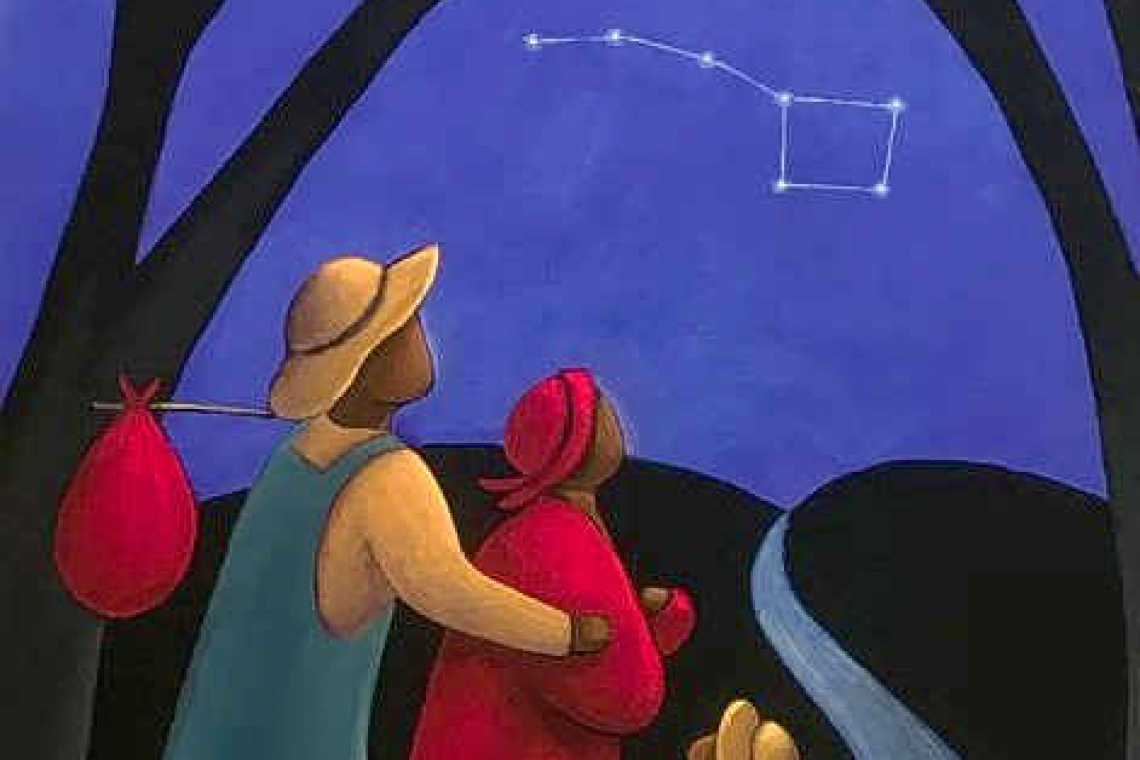~ St. Maarten’s Backyard Astronomy for Feb 18 - 20, 2022 ~
Sun rises at 6:37am
Sun sets at 6:14pm
Lunar phase: 3rd quarter, waxing crescent
Moon set: 8:40am
Moon rise: 9:03pm
This weekend, let's look northward to the stars that fill the sky around the north star, Polaris. You can easily find Polaris if you have a clear view to the north.
As the earth rotates on its axis daily, the only star that remains in the same place from our perspective is Polaris. This is a result of its position directly above the Earth’s North Pole, which is effectively the endpoint of our rotational axis. You can understand how this works by standing in your home and spinning around like a dancer. You can go slow, don't get dizzy! As you spin, notice that all the walls and furniture appear to rotate around you, but if you look up to the point directly above your head on the ceiling, that point is steady.
Once you look north, look for the two dippers, one large and one small. You may need to wait after sunset on Saturday if you want to see both dippers, 10:00pm until 5:00am offers good viewing of these two constellations. The Little Dipper is small, but important, as the final star in the handle is the North Star, Polaris. If you watch through the night, you will see the other stars of the dipper turn around this point, like the hands of a clock turning around the central hub.
Just to the east of the Little Dipper, around 10:00pm, that is where you will see the Big Dipper rising up to circle above the smaller constellation around midnight. To the west of the small dipper is Cassiopeia, the Queen on her Throne. She is low on the horizon though and sinks down and out of sight by 11:00pm. Cassiopeia is recognized by her “W” like shape, sometimes sideways or upside down as she rotates around Polaris. By midnight or 1:00am, the constellation Draco will rise just east of the Little Dipper. Draco is a dragon with a long tail that wraps around between the two dippers. The dragon's head rises last, a small polygonal diamond-like shape.
By the way, the two dippers are seen differently by various cultures around the world. Native American tribes typically see two bears, and the official name of these constellations is Ursa Minor (Small Bear) and Ursa Major (Large Bear), although these designations have come from the Greek myths. Many cultures see a plow shape, rather than a dipper, or ladle, or a bear.
And for Black History Month, it's worth honouring those who followed the “drinking gourd” north to freedom as they escaped enslavement. Keeping track of the dippers helped them find their way in the dark, seeking safety in Canada and other lands that forbid slavery. (Thanks to Sally K. Green for the image.)
Thank you for keeping up with the Night Sky articles, backyard astronomy designed for St. Maarten sky viewing. If you are out later on in the week, each star rises about four minutes earlier each day than written here, and the moon rises 50 minutes later. Night Sky is researched and compiled by Lisa Davis-Burnett. Earthsky.org is a key resource for information and images. Questions or comments? Email This email address is being protected from spambots. You need JavaScript enabled to view it.







